- Bengali Woman at the Spinning Wheel – a photogravure by Martin Hurlimann
- Indian Women Using A Spinning Wheel – c1900’s
- Gandhi Spinning
- An indigo factory in Bengal, a watercolor by William Simpson, 1863
Dear colleagues & friends,
I see many here, who knew Kamaladevi intimately and I find it daunting to speak about her. She was a colossus, who contributed to enriching all aspects of our life.
The most fitting award offered to Kamaladevi was the Charles Eames’ Award as the one individual, who had contributed to the Quality of Life in India in this era. She has been acclaimed as the dominating spirit of the last century. But, for many of us, she continues to inspire even today.
The last century saw dynamic changes not only in India, but the world over in terms of the geo-political and economic environment, as well as an upheaval of socio-cultural moorings of society. The struggle for freedom of the colonized half of the world and their emergence as sovereign nations, led to the emergence of new leadership, new concepts and ideas. It also gave greater power to women, to participate in all aspects of life, to enrich their lives as well as contribute to the enrichment of society as a whole. Women emerged from the shadows.
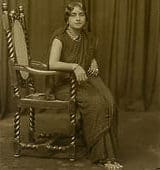 Kamaladevi Chattopadhyay was one such person, who emerged as an active participant in the political, socioeconomic and cultural life of India. Hers is a story of courage to live in the world, to participate in it fully—to take up every challenge and meet it boldly.
Kamaladevi Chattopadhyay was one such person, who emerged as an active participant in the political, socioeconomic and cultural life of India. Hers is a story of courage to live in the world, to participate in it fully—to take up every challenge and meet it boldly.
I worked closely with her from 1954 when she was Chairman of the All India Handicrafts Board (AIHB). I was one of the few persons, who could keep pace with her. Kamaladevi worked day and night, in her single minded effort to revive the cultural traditions, be it in the areas of crafts, of performing arts, of theatre or women’s rights and bring them into the contemporary context. She was passionately involved in the movement for legislating equal rights for women, so that they could be equal partners in socio-economic and political spheres. She had the ability to inspire people and through her own example change their lives. I was one amongst a legion of people she inspired, shaped and who had a much richer life because of their association with her.
She is not only remembered the world over for being responsible for building the crafts world, for encouraging artists in all spheres of life, but also as a humane person, who wanted to enrich the lives of people irrespective of caste, creed or nationhood. She fought for the rights of young and old to live with dignity? She espoused the cause of the have-nots, the neglected, the forgotten and those who languished in prison for want of someone to fight for their rights and for justice.
Till the very end she was writing petitions, listening to the woes of those who had no one to turn to. Behind the expressionless face, which people often thought was humorless and unfeeling, was a passionate woman, a perceptive person, who felt things with great intensity but had learnt early in life to not demonstrate any emotion. It was she who rescued the large number of young Sikh boys, languishing in prison without trial by filing a writ petition. It was she who took up causes, which were not in the public eyes. It was she who financed a number of people when they faced problems, from her meagre resources. Everywhere one heard: “She changed my life, she helped me when I had no support from any quarter”. She helped a number of battered women, abandoned wives and widows without questioning, without sermonizing.
She shared her knowledge, her experience with innumerable persons and helped them to achieve their goals. Those of us who came in contact with her were fortunate to have had the opportunity to learn from her experience and her faith in her beliefs.
Many have written about Kamaladevi and many more will research and write about her. Many will eulogise her, while others will criticize her. In the world of today when everything is changing and society is in a state of constant flux, when nothing remains static, situations will change and new insights will emerge and new ideas will evolve. Those who criticize her do not realize that she was a pioneer. She had no previous examples on which to build her programmes. It was the first time that a nation liberated from colonialism was working towards the creation of a society of divergent peoples who had to learn to live harmoniously and build a democratic society. The creative field not only was varied and dispersed and was a source of income for a large majority of the people at the lowest economic and social rung of society, but it also was closely linked with the ethos of the nation. She had to develop a philosophy, a concept and a plan of work, which could get support and this she did when nothing existed. It required great conviction and courage to develop programmes, evolve policies when there was no cogent past experiences as point of reference. To act and not be afraid of making mistakes and learn from them also required great courage.
- Kamaladevi Chattopadhyaya leading their Imperial Highnesses to the dias
- Crown Pince Akihito & Princess Michiko, Smt Kamaladevi Chattopadhyay, Pt Jawaharlal Nehru – Prime Minister, Mr Joseph Allen Stein
She was a real adventurer travelling throughout the world and learning at every step. She met all the great leaders of her time and attracted them by her charismatic personality. She met the rulers and also the opposition. She talked of meeting Haile Selassie and having coffee with a rebel Eritrean. She described walking down the large hall to shake hands with the King of Morocco while her Chamba sandal squeaked all the way, to discuss their strategies of resistance and encourage them in their struggle against the French colonists. She was very supportive of the Tunisian freedom struggle office in exile, which functioned from Delhi. She travelled not only in Europe and USA, but also Japan and China, travelling to China when it was under attack. The British prevented her from landing in Hong Kong, but she resisted their machinations and managed to land. Mme Sun Yat Sen looked after her. She met with Generalissimo and Mme. Chang. Later, she travelled to Japan and became quite celebrated and received 100 letters a day from people who only read about her in the newspapers. She saw Noh and Kabuki Theatre, as well as the Puppet Theatre when few people outside of Japan knew about Japan’s traditional theatre forms. She gave an image of Japanese women, which was quite different from what was generally projected. She mentioned that of the five million industrial workers, two million were women and 30% of them were in services. This was quite different from the picture others had presented of the women being subservient and house-bound.
Her love for travelling remained with her right till her last days.
Besides her contribution to development of crafts the world over and the performing arts in India, she made a tremendous contribution for the equal rights of women. Despite the statement made by Sarojini Naidu “I am no feminist”, and echoed Kamaladevi, it was these dynamic women who fought for women’s participation in the political arena as equal partners. Their active participation in the freedom struggle was closely linked with women’s rights and thus they were able to get support, often grudgingly given to the women’s cause. Gandhiji though was the one political leader who did give his full support to the equal rights of women. Kamaladevi emerged not only as a forerunner in the fight for Independence and an active part of the youth movement, but also as an active participant of the Socialist movement within the Congress Party, which challenged the old guard.
- Kamaladevi Chattopadhyaya – Leading a Congress march in the early 1930s
During our travels, Kamaladevi often talked of the women who had exerted tremendous influence on her. Her early mentor was Pandita Ramabai, the great Sanskrit scholar, whose father had been driven out of his community as he had taught Sanskrit to his wife and later to his daughter, which it was forbidden by the Brahmanical traditions. Ramabai started the Mahila Samaj and worked for the education and uplift of the women. She was the first woman to become a full-fledged member of the Indian National Congress.
Annie Besant was Kamaladevi’s “guiding star” whom her mother held out as an example to her. She was the first woman to be President of the Indian National Congress in 1917.
Margaret Cousin known as Gretta, was her real mentor who worked along with a number of women to press for women’s political rights when they petitioned the British Secretary of State for women’s franchise in 1917. Women in Britain had not been granted franchise and the colonial rulers found it difficult to accept giving the right to vote to Indian women. In 1920 the Madras State Provincial Legislature opened its membership to women and Gretta persuaded Kamaladevi to stand for the Legislature. They evolved a novel way of promoting their cause, Harindranath encouraged Kamaladevi in this endeavor, he developed plays, composed songs and actively participated in the campaign. Though Kamaladevi lost, it was by a narrow margin. Kamaladevi was the first woman to fight an election to the Legislature.
In 1938 the All India Congress Committee set up a National Planning Committee (NPC) for future planning of India and a committee to discuss women’s role in the planned economy was set up later on 16 June 1939. “It was to deal with the place of women in the planned economy…… ranging from family life, employment, education and social customs that prevent women’s participation in the economy”. Devaki Jain in her paper “Women’s Contribution to Political Economy Then & Now” summarizes the key recommendation of the committee and points out that many of the recommendations were taken up once again in 1997.
Devaki Jain in her paper writes “Kamaladevi Chattopadhyay was perhaps the most effective, exemplary constructive worker that was ‘thrown up’ by the pre-independence decades. It is conventional to suggest that she was influenced by Gandhi. The Gandhian touch or Gandhian political economy was certainly the mode of the era; but she was not one of those who directly took the mantra or initiation from Gandhi. Hers was the strength of personal struggle and of course the ‘inheritance’ of spirit of revolution and rebellion that her mother inculcated into her”.
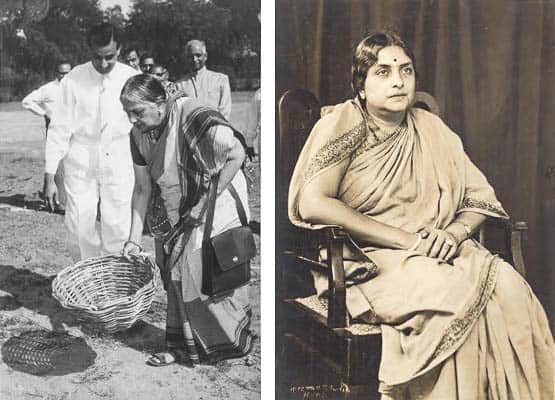
Kamaladevi’s interest in the area of crafts was nurtured in her childhood when she had participated in the creation of objects for the innumerable rituals, which were linked with the diurnal rhythms.
The act of creation had always fascinated her and she was aware that these creative people were the most impoverished and underprivileged. Gandhiji’s espousal of the cause of the indigo workers of Champaran had drawn her to the freedom movement, as she felt that here real issues relating to the people were being addressed. She was aware that Gandhiji’s interest in Swadeshi was multifaceted. It was not only a way of creating an economic policy to reach millions of rural persons who pursued cottage industries as a means of employment and subsidiary income; or a way of creating a platform for the uniting the small manufacturers of the non-formal sector. In addition, it had a deeper meaning, which was expressive of the cultural ethos of a people.
Kamaladevi was greatly moved by Gandhiji’s use of khadi as a political symbol of unification of a divergent people. He not only cut across caste, class and creed, but conveyed a number of messages. By making spinning, an essential part of the discipline of the Congress worker, he brought in a respect for working with the hands. He inculcated a respect for the act of creation and an understanding of the repetitive act of spinning as a form of meditation, a time for concentration and for inner quietude. In the midst of the turmoil of fight for freedom, hundreds of leaders, common people, who believed in the Mahatma’s approach to the freedom struggle, sat quietly spinning every day. The simple Gandhi cap, which he devised, became a symbol of unification of a people who shed their separate identities by wearing the cap.
Gandhiji insisted on Small is Beautiful as a creed from the 1920s, whereas Schumacher created an awareness of it only in the 70’s. Kamaladevi in her book Inner Recesses Outer Spaces—Memoirs writes “It was only after I met Gandhiji that I came to understand the deep relationship of handicrafts with our daily life”. How enormously beneficial it was for “us to live with them and make them an integral part of our everyday existence” to quote him: “The pleasurable sensation I enjoyed by the mere feel of the object and the tender sensitivity it breathed into the air, were experiences I valued and I still cherish like harmonious tones of music that echo in one’s being even after the sound itself has died away.
Kamaladevi describes that, on one of her earliest visits to Gandhiji, she found him in deep conversation with Dr. James Cousins, the noted Irish poet and theosophist. A few handicraft objects were lying before them and Gandhiji expounded “what was then considered one of his weird philosophies but now proved scientifically”, about the need to use our hands, which were one of our chief mediums for creative expression and also had therapeutic and meditative qualities. He talked of the imperative need to preserve this heritage that enriched every aspect of our way of life. She goes on to quote from Gandhi: “Association is the essence of relationship which endears articles of everyday use to the user. This endearment finds a way of enhancing the aesthetic values in these articles, just as we love to dress up our loved ones, so we love to embellish our homes. Here, the Craftsman employs his ingenuity through creative imagination. We are mostly carried away by a finished product, may be excited by watching the process, but remain unmindful of the deep chords within us that are stimulated when we create something with our own hands. Therefore, in the Indian tradition, creation does not mean making novel and exotic articles to please one’s fancy, but endowing everything we use in our daily life with beauty. Therefore, nothing is created without a purpose”.
Gandhiji was deeply committed to the use of crafts in Basic Education. Unfortunately, we have only given lip service to this concept and the introduction of crafts in Basic education remained, a part of tokenism in which we in India specialize and that too was later withdrawn.
Kamaladevi was a true disciple of Gandhiji and she added another dimension to it. She saw crafts not in isolation, but as a part of the rich fabric of our life involving all the creative expressions of a people. They were a part of the rhythm of life involving creativity at all levels. For her it became her entire life and she worked selflessly for the cause of the crafts, for performing arts and for nurturing the creativity of the people.
It is because of Kamaladevi’s work to revive the languishing arts & crafts of the people by travelling in the remotest parts of the country reaching out to the largest segment of people, who sustained our traditions, our skills, using the local materials that even till today nearly 30 millions are still affected by the cottage industry.
She wrote with great sensitivity of how she saw crafts in UNESCO’s publication The Arts and Man (Paris, 1969). “Craft has always been a basic activity in human society, in fact it is considered more cohesive and permeating in human relationships than even language, for it can penetrate many barriers to communication. Particularly has this been true of the older societies such as those in Asia, South and Central America, Africa and countries like Greece or Spain, where aspects of the ancient cultures still continue to produce powerful impressions that almost seem ageless.”
It was her inspiration that created the World Crafts Council in affiliation with UNESCO and it covered the whole world. The Crafts Councils became an instrument of the different governments to reach to the masters of their traditions.
People began to understand that, the growth of crafts in society was the sign of the cultivation of sensitivity and the stirring and mellowing of humanism. It stood for man’s endeavour to bring elegance and grace into an otherwise harsh and drab human existence. In fact, the aspect of life was too insignificant or humble to lay claim to beauty or acquire sanctity. The ritual objects created by the masters gave sanctity to the act of worship, which in-turn maintained the high standard in a continuous outflow of creativeness.
In one of her speeches, Kamaladevi examined the socio-economic and political role of the Cottage Industries and made a very important observation that continued existence of cottage industries meant to an appreciable extent the decentralization of social and economic power and the creation of an institutional plurality which effectively stood between the ordinary citizen and a powerful state by providing employment and economic security to the rural folk, it played an important role in the process of decentralization of economic power.
This till today is an important contribution of the non-formal self-employed sector.
This is the transcript of a talk to coincide with the exhibition Kamaladevi Chattopadhyay and the Making of Modern India, India International Centre and Delhi Crafts Council, 20 April 2016.
Author
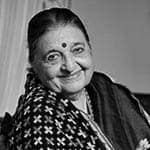 Jasleen Dhamija, known internationally as Philosopher of Living Cultural Traditions is a veteran Indian textile art historian, crafts expert and former UN worker. She has organized various seminars on Textile History, Costumes, Draping and Wrapping and has lectured in Museums and universities all over the world. As a textile revivalist and scholar, she authored and edited several books and contributed to foremost Encyclopedias. UNESCO has appointed her as President of Jury of Asian Award for Creativity in Textile over the last couple of years.
Jasleen Dhamija, known internationally as Philosopher of Living Cultural Traditions is a veteran Indian textile art historian, crafts expert and former UN worker. She has organized various seminars on Textile History, Costumes, Draping and Wrapping and has lectured in Museums and universities all over the world. As a textile revivalist and scholar, she authored and edited several books and contributed to foremost Encyclopedias. UNESCO has appointed her as President of Jury of Asian Award for Creativity in Textile over the last couple of years.


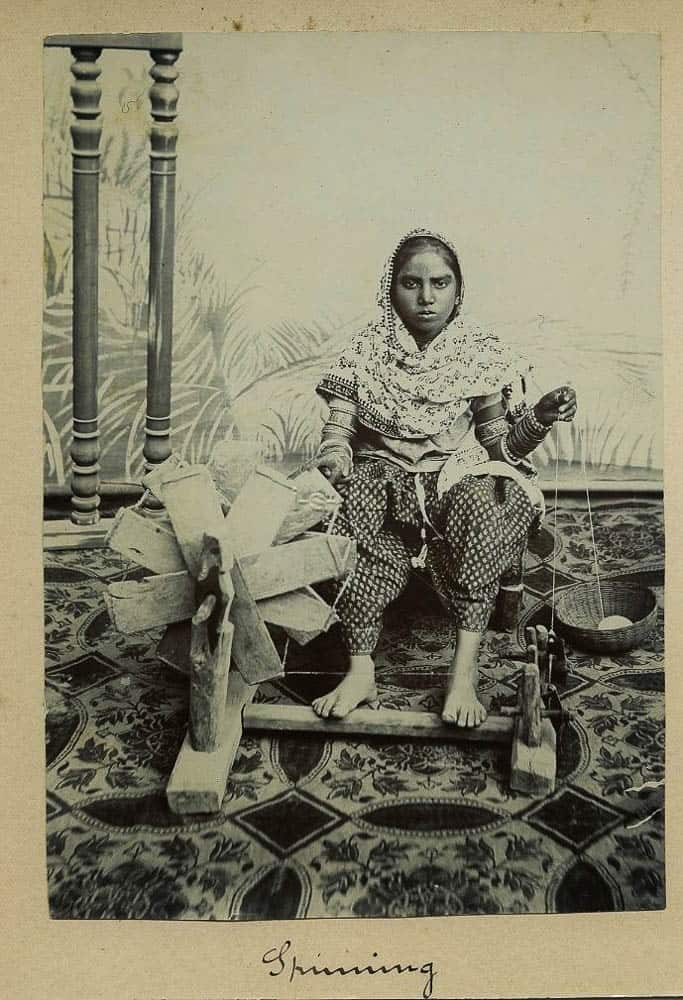
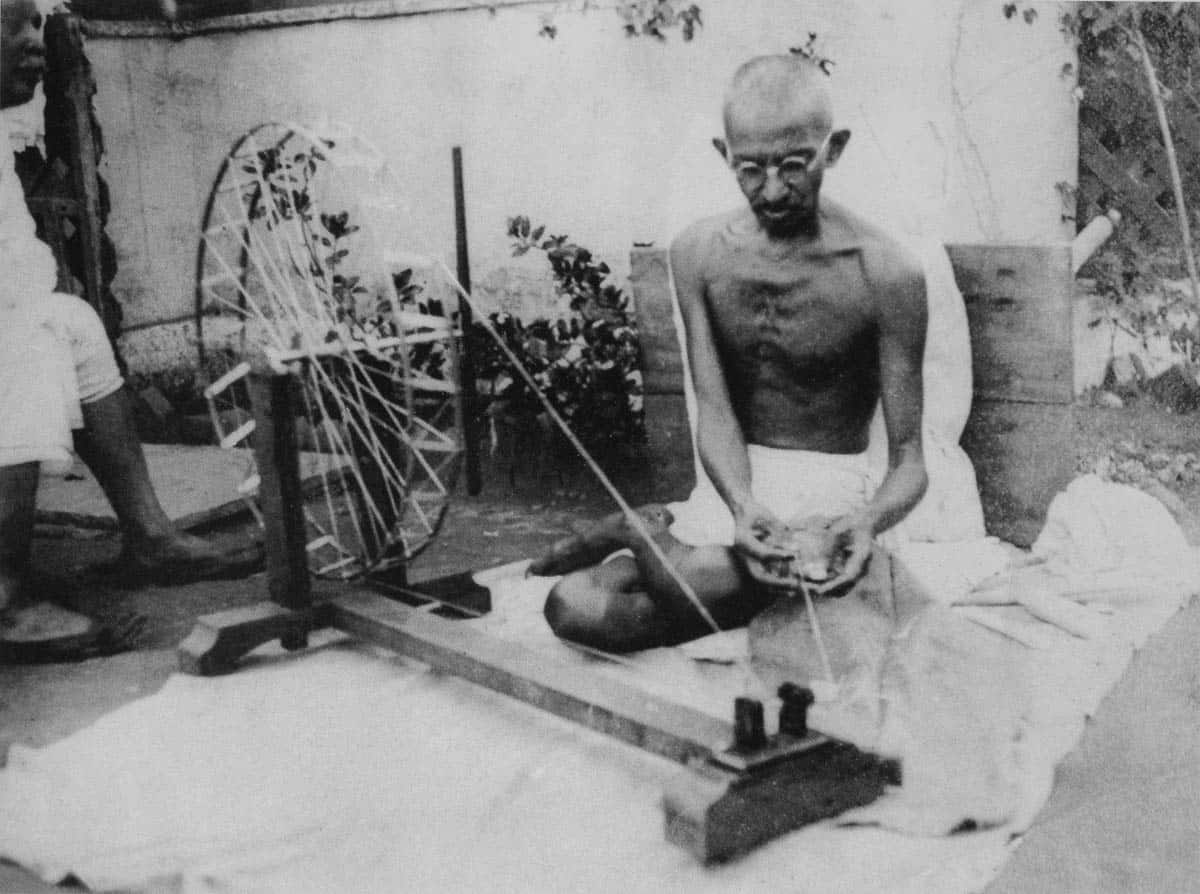
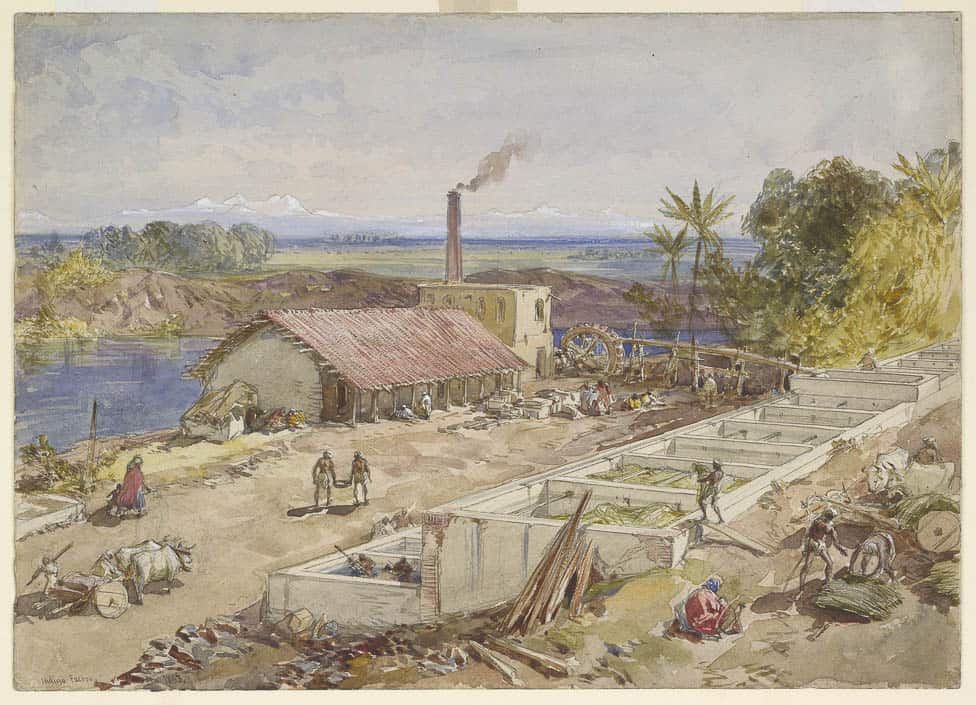

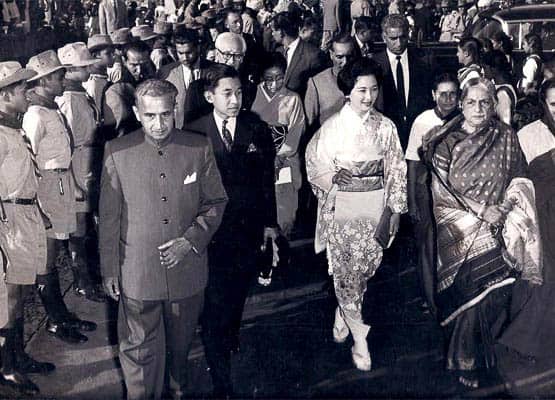





Comments
Excellent article! I have always been a fan of Kamaladevi for reviving the craft movement in India and making difference to the lives of traditional Indian craftsmen and weavers. One tends to overlook her tremendous contribution to the freedom movement, and her fight for Indian women’s rights. This article also highlights her fight for other disenfranchised people. More articles should be written to make people aware about Kamaladevi’s contribution, vision and hard work to make India take pride in its heritage. Thanks Jasleenji, looking forward to reading more!
Super piece Jasleen !!
Amazing. Thanks for sharing.
Dear Jasleen, Thank you for this informative eulogy to Kamaladevi, I have long been aware of her amazing influence on the women of India and no less on many women worldwide.
She is a great inspiration to those of us who believe there is much salvation in the act of creative making, and making do.
I will return to these words of yours again and again.
Nalda Searles